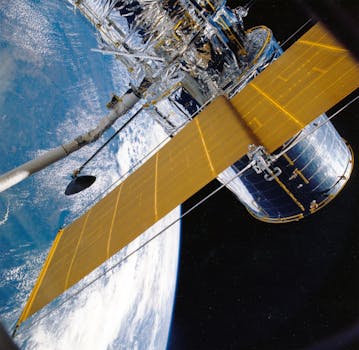
Beyond Earth: How Recent Advances in Satellite Tech are Shaping Global Communications
Satellite technology has come a long way since its inception, and recent advances are transforming the way we communicate globally. With the increasing demand for high-speed internet and reliable connectivity, satellite tech is playing a vital role in shaping the future of global communications. Beyond Earth, recent advances in satellite tech are enabling faster, more secure, and more efficient connections, bridging the gap between remote and urban areas.
Recent advances in satellite tech, such as the development of low-Earth orbit (LEO) satellites, have significantly improved the speed and latency of satellite communications. LEO satellites, which orbit the Earth at an altitude of around 2,000 km, offer faster data transfer rates and lower latency compared to traditional geostationary satellites. This has made it possible for satellite tech to support a wide range of applications, including broadband internet, voice and video communications, and even IoT connectivity.
Advances in Satellite Constellations

One of the most significant recent advances in satellite tech is the development of satellite constellations. These constellations consist of hundreds or even thousands of small satellites that work together to provide global coverage and high-speed internet connectivity. Companies like SpaceX, Amazon, and OneWeb are leading the charge in this area, with plans to launch thousands of satellites in the coming years. Satellite constellations offer several advantages over traditional satellite systems, including improved coverage, increased capacity, and enhanced reliability.
Another significant advantage of satellite constellations is their ability to provide connectivity in remote and underserved areas. Many parts of the world lack access to reliable and affordable internet connectivity, which can hinder economic development and social progress. Satellite constellations can help bridge this gap by providing high-speed internet connectivity to these areas, enabling communities to access essential services, education, and economic opportunities.
Improving Satellite Communications with Phased Arrays

Phased arrays are another recent advance in satellite tech that is improving the efficiency and capacity of satellite communications. A phased array is a type of antenna that uses multiple small antennas to steer and shape the beam of radio waves. This allows for more precise control over the signal, enabling higher data transfer rates and improved connectivity. Phased arrays are particularly useful for satellite communications, as they can help mitigate interference and improve signal quality.
Recent advances in phased array technology have made it possible to develop more compact and efficient phased arrays, which can be integrated into smaller satellites. This has opened up new opportunities for the development of small satellites, which can be launched at a lower cost and with greater flexibility than traditional satellites. Small satellites with phased arrays can provide high-speed internet connectivity and support a wide range of applications, including IoT, voice and video communications, and even 5G networks.
Security and Interference Mitigation

As satellite communications become increasingly important for global connectivity, security and interference mitigation have become major concerns. Recent advances in satellite tech have addressed these concerns, with the development of more secure and resilient satellite systems. One approach is to use advanced encryption and authentication protocols to protect satellite communications from cyber threats. Another approach is to use interference mitigation techniques, such as beamforming and nulling, to reduce the impact of interference on satellite signals.
Recent advances in artificial intelligence (AI) and machine learning (ML) are also being applied to satellite communications to improve security and interference mitigation. AI and ML algorithms can be used to detect and respond to cyber threats in real-time, as well as to optimize satellite communications and mitigate interference. This has the potential to significantly improve the reliability and security of satellite communications, enabling their use in critical applications such as finance, healthcare, and emergency services.
See more:





